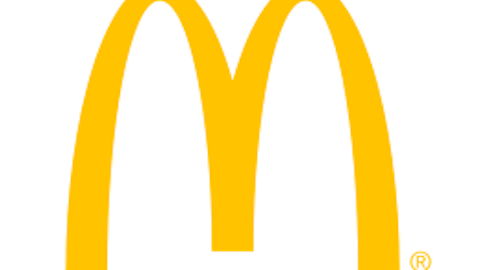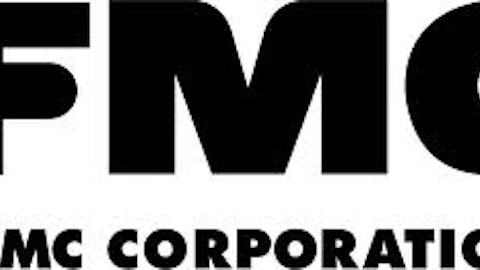Oilfield products and services suppliers ride the same waves of volatility, as does the energy industry they support. The potential for significant returns exists for these companies, and this can translate to healthy returns for those who invest in them. However, the risk factor is always there – and quite potent at times – as these corporations often traverse an oily slope. It can be a challenge for them to gain traction and continue to march ahead to growth.

The company believes, according to a Reuters.com report (Feb.13, 2013), that Venezuela’s devaluation of their currency will result in a loss of approximately $25 million this quarter. This is according to Baker Hughes’ annual report filed in February.
What does this mean for investors?
When investors research companies they’re interested in, they should consider the extent of said companies’ operations in foreign jurisdictions and the prevailing political and economic winds in those areas. National policy, especially with socialist governments, is not often in line with major corporations’ goals. Venezuela is the U.S.’ fourth-largest foreign oil supplier. There’s a lot of business to be had in that country, with the attendant risks tagging right along.
Baker Hughes recently reported their fourth quarter and annual results for 2012. According to their annual results, revenue for the year 2012 was a record $20.93 billion. This is up 8 percent compared to $19.43 billion for the year 2011.
Adjusted income from continuing operations for the year 2012 was $1.32 billion, or $3.00 per diluted share. This is in comparison to $1.81 billion, or $4.14 per diluted share, for 2011. On a GAAP basis, income from continuing operations for 2012 was $1.28 billion, or $2.90 per diluted share, compared to $3.96 per diluted share for 2011.
What are the positives investors can consider?
One positive for the company includes Mr. Martin Craighead, Baker Hughes President and Chief Executive Officer, noting that, “In 2012 we posted record revenue, with growth coming from all operating segments.”
Another positive for Baker Hughes is that their business in North America grew by 5 percent. The basis of this was mainly on the successful introduction of several well construction technologies. Investors should research companies that have a strong commitment to R&D, which helps keep them at the forefront of the industry. Since 2001, Baker Hughes has doubled their annual investment in research and engineering. The company has a two-tier technology program. The first tier is short-term applied engineering to drive next-generation products and services. The second tier is long-term critical research to develop game-changing technology.
As I mentioned in a previous blog post (Are These Two Diamonds in the Rough or an Investor’s Best Friend?, Feb. 12, 2013), a report in Drilling Contractor Magazine (November 2012 – Joanne Liou) indicated that “…the offshore market is providing more signs for a positive outlook as well, powered by the deepwater Golden Triangle and a robust jackup market.”
Investors should consider that this is beneficial to Baker Hughes; in the Gulf of Mexico, the company’s business grew over 30 percent for the year. The basis of this growth was a rebound in deepwater activity, share gains in drilling and wireline services, as well as small improvements in price.
Halliburton Company (NYSE:HAL) is also experiencing the effects of currency devaluation. The company is one of the world’s largest providers of products and services to the energy industry. They said that the devaluation of the Venezuelan bolivar would lead to a foreign currency loss in the first quarter of approximately $30 million.
Halliburton’s total revenue was $28.5 billion for the full year 2012. This represents an increase of $3.7 billion, or 15 percent, from 2011. This was a record year for the Company. Concerning their revenue, Halliburton set new records in 2012 in all of their regions and both of their divisions.
Of note for investors is this strong revenue growth, and also that the company is innovating its technology. Halliburton, Apache Corporation (NYSE:APA), and Caterpillar Inc. (NYSE:CAT) have developed cutting-edge dual-fuel technology. This technology has the capability to power, safely and efficiently, the pumping equipment used for fracturing treatments with a mixture of natural gas and diesel.
Halliburton recently received recognition at the 11th Annual World Oil Awards with a “Best” award for their Frac of the Future equipment suite in the Best Health, Safety, Environment/Sustainable Development Onshore category. They also received a “Best” award for their DecisionSpace® well planning software in the Best Visualization and Collaboration category.
In February, Apache, an oil and gas exploration and production company, reported record overall production for their fourth consecutive year, and record oil and liquids production. Average daily production during 2012 increased to 779,000 barrels of oil equivalent (boe) per day, up 5.4 percent in comparison the prior year’s production, adjusted for dispositions. Oil and gas revenues were a record $16.9 billion, up from $16.8 billion in the prior year. Their North American oil production increased 12 percent during the year.
It’s important for investors to consider is that Apache invested $9.0 billion on exploration and development during the year. This sets the stage for future production, revenue, and profit growth. Concerning the aforementioned dual-fuel technology, they’ve teamed with service providers to power hydraulic fracturing using natural gas. The companies faced the challenge of finding a way to get the engines to run on natural gas as a fuel.
Caterpillar, an engine manufacturer, was their solution to the problem. Mr. Brian Erickson, Apache senior production engineer, E&P Technology, said, “Caterpillar was able to develop dual-fuel kits that would allow the engines to run on diesel while idling and natural gas when they are throttled up for pumping.”
Investors need to be aware of corporate innovation initiatives and the combined power of corporations working together. Consider Caterpillar’sstrength in 2012. In late January 2013, they reported record 2012 sales and revenues of $65.875 billion, an increase of 10 percent from $60.138 billion in 2011. Profit per share of $8.48 was an all-time record. The 2012 profit per share of $8.48 was up 15 percent from $7.40 in 2011. Profit was $5.681 billion, an increase of 15 percent from $4.928 billion in 2011.
Continuing my focus on technology developments concerning these companies, note that Caterpillar’s powering of the company’s R&D is by through their engineering community of over 8,000 highly skilled technical experts. The company’s work with Halliburton, Apache, and others is a win-win situation for these companies, and by extension their stakeholders, who should reap the benefits of these initiatives.
Additionally, in December 2012, Caterpillar and Ariel Corporation announced the formation of a 50-50 joint venture that will provide well service pressure pumping products for customers in the international oil and gas industry. The combined venture, Black Horse LLC, also announced the acquisition of pump manufacturer ProSource of Houston, Texas. This teaming up and attendant acquisition is building a strong foundation. It may portend more growth for Caterpillar and potential shareholder ROI.
So it’s the good and not so good in the industry – room for growth and profits – with the downside of currency troubles and being at the mercy of foreign government dictates as concerns levies, taxes, and stipulations on corporations operating in their environs.
The article Often Traversing an Oily Slope originally appeared on Fool.com and is written by Michael Ugulini.
Copyright © 1995 – 2013 The Motley Fool, LLC. All rights reserved. The Motley Fool has a disclosure policy.




